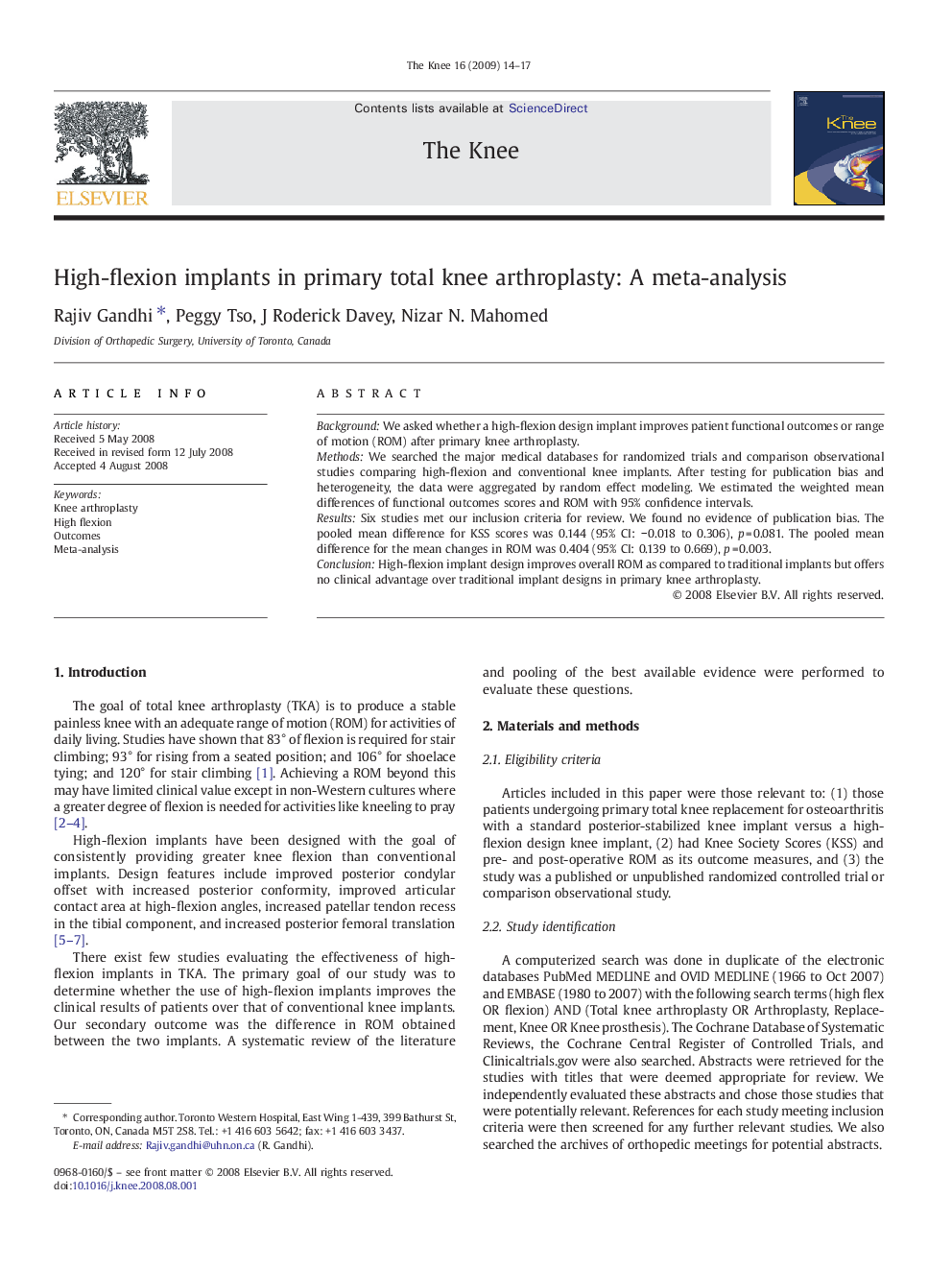| Article ID | Journal | Published Year | Pages | File Type |
|---|---|---|---|---|
| 4078373 | The Knee | 2009 | 4 Pages |
BackgroundWe asked whether a high-flexion design implant improves patient functional outcomes or range of motion (ROM) after primary knee arthroplasty.MethodsWe searched the major medical databases for randomized trials and comparison observational studies comparing high-flexion and conventional knee implants. After testing for publication bias and heterogeneity, the data were aggregated by random effect modeling. We estimated the weighted mean differences of functional outcomes scores and ROM with 95% confidence intervals.ResultsSix studies met our inclusion criteria for review. We found no evidence of publication bias. The pooled mean difference for KSS scores was 0.144 (95% CI: − 0.018 to 0.306), p = 0.081. The pooled mean difference for the mean changes in ROM was 0.404 (95% CI: 0.139 to 0.669), p = 0.003.ConclusionHigh-flexion implant design improves overall ROM as compared to traditional implants but offers no clinical advantage over traditional implant designs in primary knee arthroplasty.
